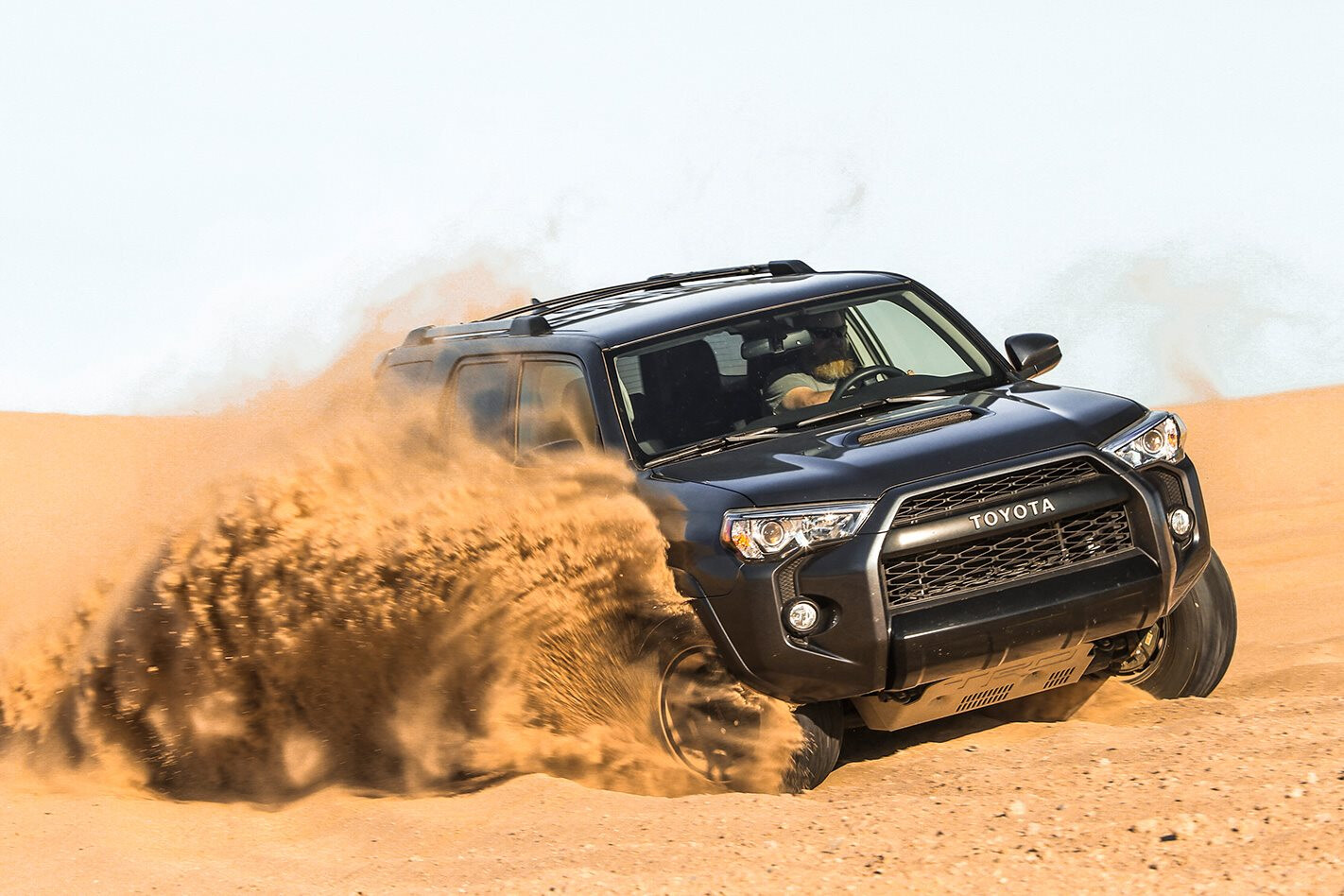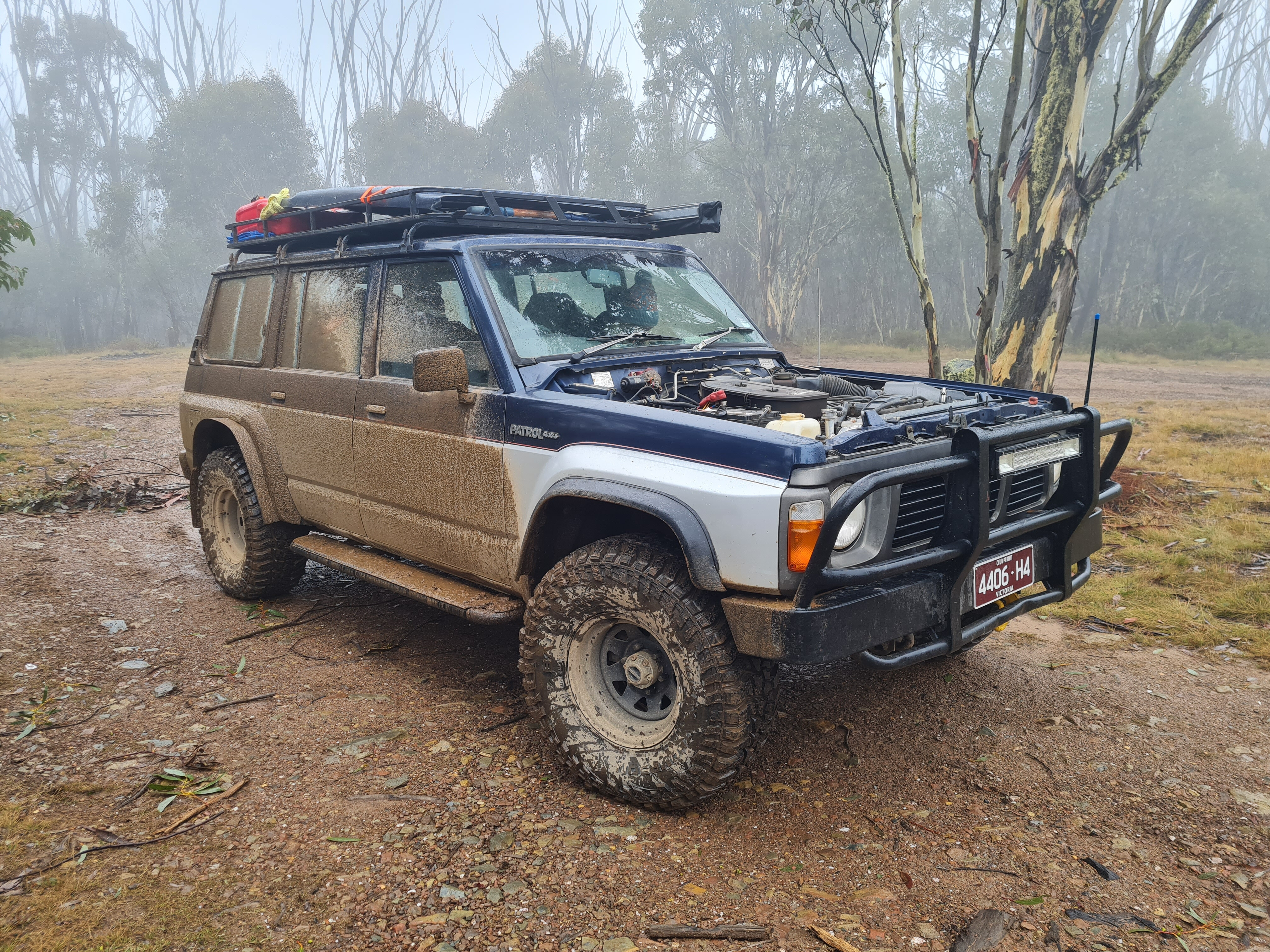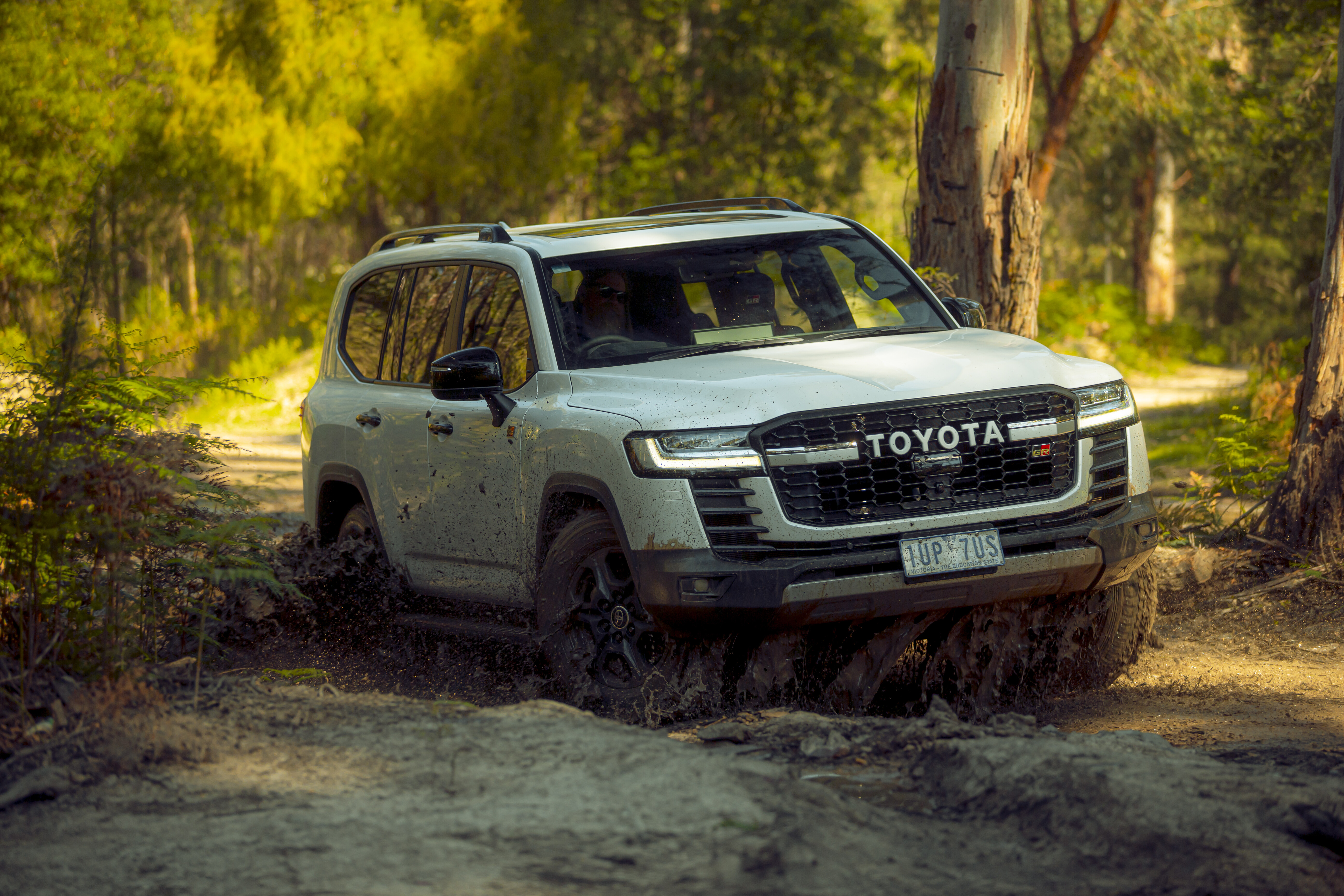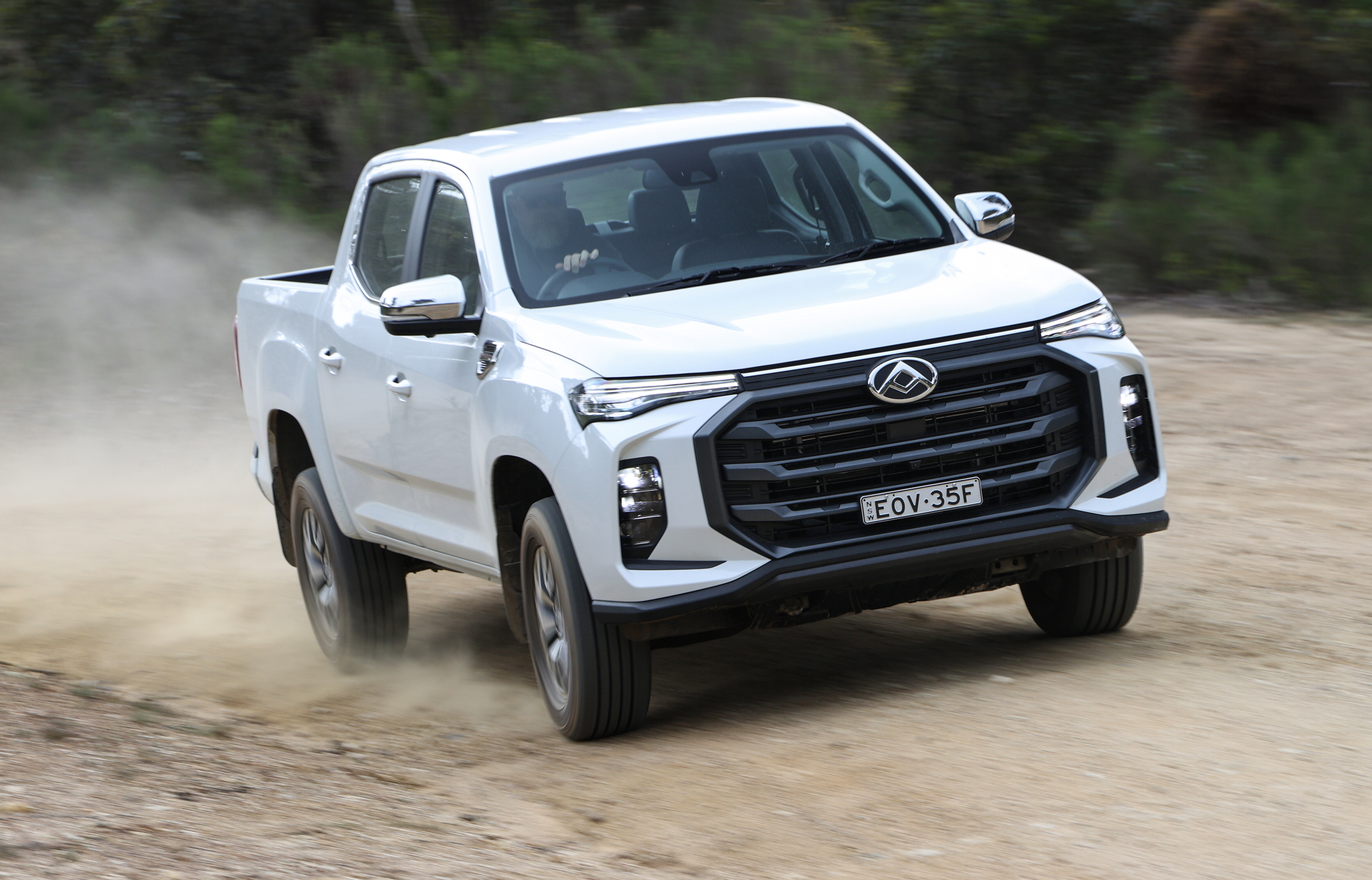Not only is the legendary Toyota 4Runner still sold in the USA, but the Yanks also get the option of the hopped-up TRD Pro edition.
The TRD Pro is more than a black-out job; it comes with a tuned suspension package that really transforms the off-road-capable wagon.
The 4Runner and TRD badges are not foreign to Australians. The Hilux-based 4Runner was a very popular 4WD here during the ’80s and ’90s before Toyota Australia killed it off in favour of the Prado wagon; while the TRD badge was applied to various Toyota Australia models, including the Hilux, back in the 2000s. Unfortunately, the local TRD vehicles didn’t live up to expectation and the sub-brand soon disappeared from our showrooms.
The 4Runner now on sale in the USA is the fifth generation of the model and has been around since 2009. Unlike the earlier ute-based generations, this 4Runner is based on the Prado/FJ Cruiser (FJC) chassis. In fact, when Toyota USA axed the FJ Cruiser a few years back they pushed the 4Runner TRD as the 4×4 for buyers still looking for an off-road-capable Toyota wagon. You could think of the current 4Runner as a four-door FJ Cruiser without the funky styling.
The 4Runner rides on a separate chassis with a live axle at the rear and IFS up front, using coil springs all around. It has a 2789mm wheelbase, so it’s pretty close to the Prado which is 2790mm. The FJC rode on a shorter 2690mm wheelbase.
The only engine choice is the 1GE-FE 4.0-litre we are familiar with from the Hilux, Prado and FJC. In 4Runner guise it makes 201kW at 5600rpm and 377Nm at 4400rpm, so similar to the spec here. The only available transmission is a five-speed automatic backed by part-time, dual-range 4WD, although the top-of-the-range Limited 4Runner gets full-time 4WD, just like the Prado.
The 4Runner is a five-door, five-seat wagon, and third-row seating is available as an option on some of the non-TRD variants. This leaves plenty of room in the back for cargo. The body retains relatively squat and compact proportions and keeps the forward-sloping C-pillar that is a 4Runner trademark.
The cabin features black leather TRD seats and has enough space to carry adults in the front and back. It’s also got all the usual trinkets you expect in a vehicle in this day and age.
Notably different to our Toyota 4x4s is the cheaper feeling and finish on the interior panels and touch points, which really gives a lower quality impression than those used here. One thing Toyota Australia could learn from the USA is that the big dials for adjusting the audio and heating controls are easy to operate, even if they feel somewhat cheap to the touch.
Only the TRD Pro models get the T-O-Y-O-T-A grille badges in lieu of the usual Toyota symbol, as well as black badges and black alloy wheels. Other 4x4s in the Toyota USA range that get the TRD Pro treatment are the Tacoma and Tundra pick-ups. The TRD alloy wheels wear 265/70 R17 Nitto Trail Grappler tyres.
It’s underneath the 4Runner where the TRD extras get exciting. There’s a tough TRD metal bashplate protecting the front-end components, and the suspension is a mix of top-shelf components utilising remote-reservoir Bilstein dampers and custom-tuned Eibach springs. These components are what really make the TRD Pro special.
The TRD suspension softens the ride compared to a regular 4Runner, which allows it to articulate better on the tracks. The softer ride feels better on-road while the handling remains fairly neutral, which is what you’d expect of a 4×4. It certainly doesn’t feel detrimental to on-road handling.
Off the road it gives an extra 25mm of suspension droop with a similar increase in ground clearance, but, more importantly, those Bilstein dampers really control the vehicle at speed over rough terrain. We found a nasty series of eroded ‘whoops’ on the access road to our photo location which, when taken at any speed above crawling pace in a standard vehicle, would see its suspension bottoming out, topping out, and every mess in between.
In the TRD Pro 4Runner we were able to take them quicker than expected and, even with wheels leaving the ground, the vehicle remained composed and controlled. Something you wouldn’t get with any regular OE suspension set-up. We actually hit the TRD bashplate before bottoming out the suspension.
The rear axle gives great articulation to keep those Nitto tyres on the ground, and even the front seemed to have more travel than any Prado, Hilux, Fortuner or FJ Cruiser we’ve driven in Australia. When you run out of travel Toyota’s ATRAC electronic traction control system works well to keep you moving, and there’s a standard rear differential lock to employ as well. The drive system is basically what we had on the last of the FJ Cruisers here and that includes the electronic Crawl Control system.
Unfortunately, the great chassis is let down by the engine. The petrol V6 really lacks the mid-range grunt needed in a vehicle like this. It would be worth getting an aftermarket supercharger installed to push out the power. Luckily, there are plenty of kits to suit and give you that much-needed grunt. Of course, being American, there’s no diesel engine available for the 4Runner.
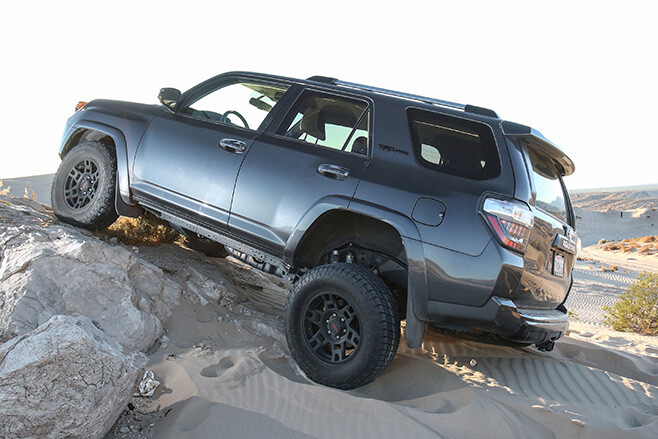
Would we prefer the 4Runner to the Toyota Fortuner offered in Australia? Yes and no. We prefer the more masculine and tougher look of the American 4Runner and like the fact that it is offered as a five-seater, not seven. However, the Thai-built Fortuner has much better quality and fit and finish. Neither the US-spec petrol V6 nor the AU-spec 2.8-litre diesel engine are ideal, but at least there are good mods available for the V6 to fix it. The Fortuner’s six-speed auto is definitely better than the older five-speed in the 4Runner.
However, it would be nice to have a local TRD option. The blacked-out trims and off-road-oriented, well-set-up suspension package with proper off-road tyres are real winners here, and Toyota Australia would do well to offer similar to buyers locally. They’d just need to research and develop better products than they did with their last TRD offerings.
SPECS Engine 1GR-FE petrol V6 Capacity 4.0-litre Power 201kW @ 5600rpm Torque 377Nm @ 4400rpm Gearbox Five speed auto 4X4 System part-time, dual range, rear diff lock Construction body on frame five door wagon Front suspension independent with Bilstein struts & Eibach coils Rear suspension live axle with multilink supported by Bilstein shocks & Eibach coils Wheel/tyre spec TRD 17in alloys, 265/70 R17 Kerb Mass 2154kg GVM 2950kg Towing Capacity 2268kg Seating capacity 5 Fuel tank capacity 87L On-test consumption 11.53L/100km Price US$41,850


